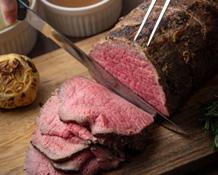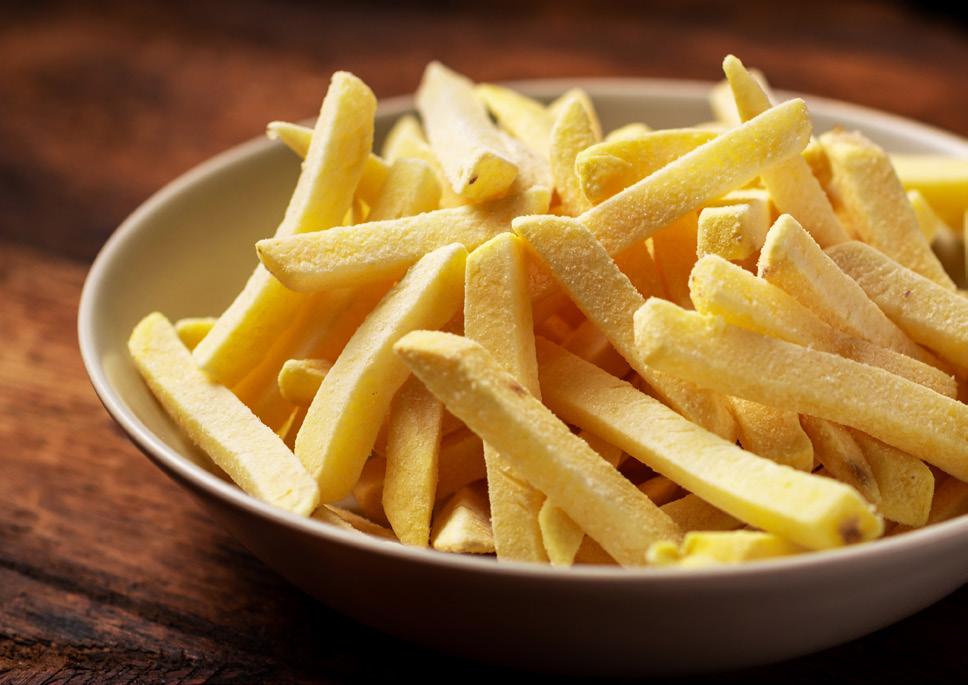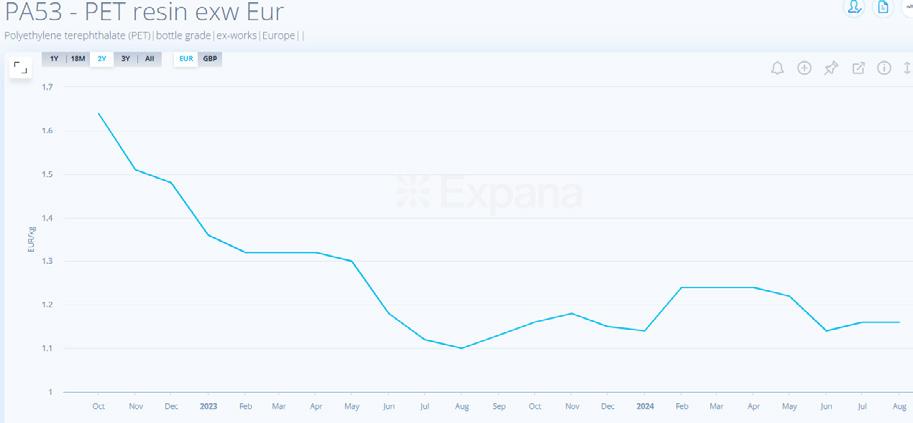

Market Update
October 2024

October 2024











•
•
• Tomatoes
• Onions
• Potatoes
• Melon
• Citrus
• Brocolli
•
•
Macroeconomic
Ireland
Cost of food in Ireland increased two percent in August of 2024 over the same month in the previous year. Food inflation in Ireland averaged 3.37 percent from 1976 until 2024, reaching an all time high of 21.10 percent in December of 1976 and a record low of -8.10 percent in January of 2010.
Food inflation in Ireland is expected to be 3.20 percent by the end of this quarter, according to Trading Economics global macro models and analysts expectations. In the long-term, the Ireland food inflation is projected to trend around 1.70 percent in 2025, according to our econometric models.

*Source Central Statistics Office Ireland Value Chg Chg%
Inflation in the euro area
Cost of food In the Euro Area increased 1.70 percent in August of 2024 over the same month in the previous year. Food Inflation in Euro Area averaged 2.44 percent from 1997 until 2024, reaching an all-time high of 17.50 percent in March of 2023 and a record low of -1.50 percent in October of 2009.
Food Inflation in Euro Area is expected to be 2.20 percent by the end of this quarter, according to Trading Economics global macro models and analysts expectations. In the long-term, the Euro Area Food Inflation is projected to trend around 2.00 percent in 2025, according to our econometric models.

*Source EUROSTAT Value Chg Chg%
CRUDE OIL
Crude Oil decreased to 4.23 USD/BBL or 5.90% since the beginning of 2024, according to trading on a contract for difference (CFD) that tracks the benchmark market for this commodity. Crude Oil is expected to trade at 74.09 USD/BBL by the end of this quarter, according to Trading Economics global macro models and analysts expectations. Looking forward, we estimate it to trade at 75.75 in 12 months time.

LOGISTICS
As we approach the final quarter of 2024, the global maritime landscape is marked by a confluence of challenges and opportunities, particularly in the Far East-West Bound (FEWB) and Trans-Pacific Eastbound (TPEB) markets. Shippers, freight forwarders, and maritime stakeholders alike are keeping a vigilant eye on fluctuating rates, capacity constraints, and operational disruptions. The ensuing months promise a complex tapestry of trends that will shape the industry’s direction into the new year.

THE ROAD AHEAD
As Q4 2024 approaches, the maritime industry stands at a crossroads. The interplay of capacity challenges and operational disruptions will define the trajectory of FEWB and TPEB markets. Stakeholders must remain vigilant, continuously assessing the market dynamics and adjusting their strategies accordingly.
The questions that linger are numerous: Will capacity constraints lead to a rate surge, or will demand falter, leading to a market correction? How will geopolitical and environmental factors reshape the operational landscape? And, crucially, how can shippers and carriers alike navigate these choppy waters to emerge stronger on the other side?


Protein market update
Beef
Beef prices increased in August contrary to the traditional trend of price declines generally seen in late summer on the back of tight supplies of prime cattle with factories scrambling for stock.
• Bord Bia anticipate that 2024 overall will be back by 40000 hd or 2.2% versus last year. The main pinch point will be the last quarter of the year.
• Average cattle weight is back circa 4% year-todate which equates to an additional 71000hd or 3.9% less cattle.
• Average European cattle price is at €5.20 (excl VAT) - compared to Ireland at €5.03 (excl VAT) making our product more competitive on the European market hence higher exports leaving less cattle available on the island of Ireland.
• Livestock exports from Ireland are up 155% year-on-year across all categories.
• Finished cattle 99% at 80000hd.
• Stores 202% at 70000hd
• Weanlings 197% at 78000hd
• Demand on second grade cuts continues to grow as availability of steak meat remains an issue as well as customers naturally moving towards these cuts for a value option.

10JUN 17JUN 24JUN 01JUL 08JUL 15JUL 22JUL 29JUL 05AUG 12AUG 19AUG 26AUG

*Source: Agriland
Chart represents the weekly kill of Heifers, Steers, Cows, Bulls and Young Bulls processed at DAFM factories

Weekly
Pork
Pork market holds steady with European buying interest for pork meat been reported as ‘below expectations’, according to multiple market sources, as seasonal demand for pork grilling times declined during August.
• The supply of pork meat is expected to remain steady at sufficient levels during the coming weeks, according to multiple market sources. Both slaughter numbers and slaughter weights are anticipated to remain largely stable.
• The buying interest for EU pork cuts is expected to remain stable on international markets, while demand for European pork by-products is anticipated to remain steady. Buying interest for cuts has been supported by increasing demand from South Korea, Japan and Canada. The market for byproducts will largely be driven by Chinese demand, according to market sources.
• Irish pig prices remain robust with weekly throughput back at levels of circa 65,000 pigs per week and cheaper EU meat available.
• The IFA Pigs Committee led by Chairman, Roy Gallie, are in engagements with factories, secondary processors, retailers, the foodservice sector and within the channels of government procurement to try and ensure pig prices remain strong for producers.
Pigmeat Prices by Country for Selected Year
Ireland EU
Lamb
Irish Lamb price is currently year to date average 16.6% ahead of last year and the trend is set to continue into the remainder of 2024 driven by below factors:
• Reduction in raw materials
• Higher input costs for farm suppliers
• Poor grass growth throughout the year, which is causing lambs to finish later and lighter equating to less sheep supply.
• Reduction in carryover from 2023
• Southern hemisphere product being re-directed to other markets causing higher demand in Europe.


*Source Agriland - Irish Farmers Journal
National Livestock Price

Poultry market update
Poultry
The fresh Poultry market particularly chicken and turkey continues to be a challenge as we move towards Autumn / Winter with no sign of any softening.
Main drivers of inflation
• Less availability coupled with higher demand.
• Live bird price inflation.
• The ongoing Salmonella outbreak in Brazil and Poland will play a key part with availability on both chicken and turkey.
• Reduced quota from Ukraine to Europe hence adding further pressure on European supply.
• Poland using majority of produce for domestic markets and not exporting normal levels.
• Reduced livestock availability in key growing countries, Poland and UK (UK reducing stocking densities).
• Reduced fresh poultry imports from Ukraine to Eastern Europe stimulating consumer demand for domestic origin product in Eastern EU territories.
• Cost of livestock, minimum wage increases, utilities price, low cereal crop yields driving feed price.
EU Live Bird Pricing


Duck
Duck prices stand steady with sufficient levels of supply available albeit duck supply and price is influenced by many moving factors: disease outbreaks, alternative protein demand and sustainability.

Seafood market update
Salmon
Salmon is stable now but will start to increase in the coming months as European smokers start to smoke salmon and freeze for the festive season.
Whitefish
Whitefish is in demand from all through Europe. Landings in Ireland has been poor because many of the Irish fleet has been fishing for tuna in Irish waters but will return to white fish in September.
Cod
The Cod market is very erratic lately with very little being caught in Irish waters and the purchases have been mainly from Scottish auctions and will continue in September. Prices vary from day to day and can see auction prices range up to a Euro/kg. The Barent Sea quota has been recommended to be cut by 31% for 2025.
Hake

Prawns
Prices are skyrocketing in Vietnam due to shortage of raw material. In September US importers who had huge contracts in India were confronted with too many long delays and realized that their goods would not arrive in time in the US for Christmas sales. So many of them opted to relocate their orders to Vietnam at higher prices but with better delivery timeline.
Hake is being landed by Spanish vessels fishing in Irish waters very little being landed in Scotland. There is a huge demand in Spain for September which will put price pressure on the species. Very small landings from Irish vessels.

Squid
Squid prices remain high as there is no increase in the amount being caught. With the increase in transport costs, squid prices are expected to remain at a high level. Overall, the catch is back 75-80% compared to last year with no improvement expected over the next few months.
Business was normal but when the US relocated their orders, virtually all raw material disappeared, and prices have gone up easily with 1,5 USD/kg. Even now, the big players like Stapimex and Minh Phu are very worried that they will not be able to keep their commitments, neither volume wise nor price wise. All factories are sourcing daily from even the smallest farms.
The main shrimp season is almost over, second crop will only be a fraction of the main season since last year has given little motivation to the farmers to invest more than normal into seeding. In addition, the weather is not helping either. Heavy rains are changing the water salinity and temperature too fast, causing the shrimp to die.
Prices in India are increasing also, they even feel it in Ecuador. There is a price increase almost every day in raw material price. This should stabilize by mid-October, but for the moment seems all packers are short of raw material, and there is some shortage in sales from India and Vietnam that customers are looking for product in Ecuador.
*Source FIS Fish Information & Services
Figure 1: Trend of China's Ocean Squid Price Index (Monthly)

Dairy market update
Price of milk in the EU is increasing due to seasonal expected changes in September onwards which will increase the demand for milk to ensure supply security for processing plants. In Ireland farmgate prices increased .03 cent a litre. Farmers are also getting .04 cent a litre for sustainability.

Milk Price Tracker – July 2024
The milk prices in the table below are those quoted by co-ops for the month of July (2024).
Source: Agriland Price Tracker
Although milk production in the EU has increased from January to June this year versus last year by 0.6%, Ireland’s milk production is actually down in the same period by 5.3%. Milk Production
Monthly Price Movement
*Mintec Source
Milk production by geographical area
*Data from CLA.IT
€600/MT
change month-on-month change ED24 – Milk fresh 4.0% fat EXW DE (EBP)
∙ The Expana Benchmark prices (EBP) for Milk EXW Germany [Expana Code: ED24] was assessed at €600/mt on August 29, up €130/mt on the month.
∙ The bullish sentiment was supported by decreasing milk intakes across Germany, additionally milk fat content has been reported weak throughout the month, while milk protein levels remained in line with market expectations.
∙ Demand for fresh milk and liquid commodities remained strong during August, supported by several processors returning to the spot market to ensure supply.
Butter prices have increased substantially in the last 6-8 months, 14% increases in August alone and this is due to the increases in Milk, the decrease in volume of milk output which is leading to less butter been produced. You can see in all graphs below the impact of butter increases over the last few months.

∙ The assessment for unsalted butter EXW European Union [Expana Code: J116] was made at €7,950/mt on August 28, up €975/ mt m-o-m.
∙ The market sentiment for EU butter was reported as 'bullish' during August, driven by tight cream supply and increasing demand for butter.
∙ On a per tonne basis, average EU industrial butter prices outperformed retail butter prices, linked to tight industrial stocks and production.

Italian cheese prices are due to lack of raw material which are leading to lack of production and limited availability of the finished product.

Italy, Milan - Average Monthly prices of Grana Padano Aged 16 months or more ('scelto 01', whole wheel lots)
€/kg
*CLAT.IT Source

Bakery market update
Wheat
The Euronext milling wheat price decreased by 10.6% over August 2024, last trading at €194.6/mt. Additionally, competitive offers from the Black Sea region continue to add pressure on prices.
Wheat quality remains a concern in the EU market. According to French Agri Mer, the soft wheat crop in France has been affected by rain, resulting in milling quality falling below the average in recent years. A survey conducted with crop institute indicated that only 26% of the 2024 crop achieved a test weight above the standard 76kg/hl, a notable decline from the 2019-2023 average of 76%. Regarding protein content, 74% of the crop had a protein content above 11%, down from the five-year average of 85%, while only 43% of the crop exceeded 11.5% protein, a threshold crucial for several key importers. Germany is facing similar wheat quality issues, and the production seems to be lower than initially expected by market players. Currently, market participants are pegging German 2024/25 wheat production at 18-19 million mt, slightly lower than the German Association of Farm Cooperatives (20.2 million mt). In Ukraine, market players report that 30% of wheat makes the milling grade. In addition, wheat harvested in north Russia is also of poor quality with a significant portion of it potentially not meeting milling wheat standards. Although more of the crop needs to be harvested before any concrete conclusions can be drawn industry insiders commented that a significant amount of volatility could arise in the wheat market if Russian production and quality decline further.
Global wheat ending stocks for 2024/25 are forecast at 256.6 million mt, the lowest total in 9 years. Ending stocks
for major exporters are collectively forecast at 53.7 million mt, down 8% from the previous year and 12% lower than the recent five-year average.
The latest USDA publication showed a downward revision of wheat production in Europe at 128 million mt, down 2 million mt. Market players report that they believe these estimates have ‘not fully integrated the decline in observed harvests.’ Strategie Grains by Expana believes that the total European wheat production estimate is closer to 123.4 million mt for the 2024/25 season and this is mainly linked to poor harvest in France, which is at its lowest level since 1986, at around 25 million mt.
Monthly Price Movements

Source: Mintec
Sugar
Across the northern European plain, the late sown beet has developed well in recent weeks thanks to a mix of rainfall, sunshine and summer temperatures. That said, there are many reports of sugar beet disease, including virus yellows, "syndrome basses richesses" (SBR) and Cercospora, which may yet challenge the consensus estimates of five-year average yield. In Germany, the Cercospora incidence in the Rhine Valley is reported to exceed 15% of the sugar beet area. In northern and eastern France, the continued wet conditions pose challenges for sugar beet, as they increase pest and disease pressure.
In its latest report (August 26), the European Commission revised its yield forecasts downwards to the 5-year average. Further to the cessation of sugar imports from Ukraine in June, imports of sugar into the EU have stagnated and applications for EU and UK import licences remain subdued according to data published by the European Commission and gov.uk for August 2024. However, South African sugar will apparently return to the UK, of which 10,429 mt bulk raws and 21,630 mt bulk raws or whites, according to gov.uk import licences data. The average EU sugar price recorded from invoices data collected by the commission fell to 775 €/t in July from 807 €/t recorded in June, a relatively sharp drop for this data series and the lowest since January 2023. Meanwhile, the spot market is struggling to maintain 600 €/t, seemingly reflecting expectations of a surplus of sugar in the EU for the coming 2024/25 campaign. However, it should be noted that the sugar beet crop has rarely been sown so late and yield estimates could be revised downwards. European Union sugar stocks amounted to 6,179,184 tonnes at the end of June, according to data released by the commission on 29 August. This level of stocks was 478,413 tonnes lower year-on-year, but the year-on-year difference continues to diminish, perhaps indicating strong sugar consumption this spring and summer. In January 2024, the difference was 1,476,430 tonnes. The dramatic fall in stocks held by EU refiners no doubt reflects the poor level of imports of raw sugar which were displaced by Ukrainian sugar imports. According to a note published by Nordzucker, closing stocks at the end of September in the EU and the UK are expected to be lower than last year due to higher exports and lower imports.

$500.00
$475.00
$450.00
$425.00
$400.00
$375.00
Raw and White Sugar Futures Prices
Source: Mintec
Cocoa
Overall, with few new producers buying or selling, and only modest amounts of spec short-covering, open interest in London waned throughout August, falling from 221,476 at the end of July to 207,409 lots as of 20th August. This coincides with traders who told Expana that August was a relatively quiet month for trading in general, with many procurement teams having already locked up their buying into 2025 where possible. Additionally, the GBP/USD rate rose throughout the month as the dollar experienced broad weakness ahead of another Fed interest rate decision in the coming weeks and uncertainty surrounding the upcoming presidential elections in early November. Furthermore, the pound has been buoyed by stronger-than-expected UK economic data.
In mid-August, Ghana’s Cocobod surprised the industry by announcing that they were seeking to finance new crop payments using domestic lenders rather than the traditional foreign sources of financing. This somewhat unusual structure has led some sources to tell Expana that they are uncertain whether or not Ghana will be able to meet all of its exports in a timely manner in the upcoming season. More crucially, as part of the agreement, Cocobod have announced that they are targeting a total delivery volume of 650,000 mt, a roughly 20% reduction from the previous year. According to one public statement, some 30% of Ghana’s planted area has been infected by the Swollen Shoot Virus (SSV). With few updates regarding EUDR implementation ahead of the deadline at the beginning of 2025, Cameroon has announced that they have signed an agreement with six exporters to implement a geolocation programme that is able to trace and identify shipments back to individual farms to comply with EU policy. The pace of adoption, however, remains to be seen.

Expana Benchmark Prices for Spot Cocoa Western Europe EXW

Canned + Dried market update
Olive Oil
Olive Oil prices rose in August due to a revival in demand. While there are expectations for a recovery in global output, particularly in Spain for the 2024/25 season, recent dryness in key growing regions have however raised concerns. Thus, weather conditions will remain a watch point.
Following price declines in June and July, olive oil prices climbed in August. Market sources attribute the price rise to a revival in demand following the removal of the sales tax on Spanish olive oil.
While favourable rainfall initially boosted optimism for the 2024/25 season’s Spanish olive oil production, severe heat and dryness in key growing regions has since heightened uncertainty.

Rice
According to market players, Indian export tariffs on rice products are likely to be reduced before the end of 2024.
Spanish rice prices were unchanged compared to the previous quarter. Spanish rice production for 2023/24, represents a 5.7% year-on-year decrease in yield.
Italy experienced wetter than usual weather during June which delayed rice sowing and caused rice prices to climb 7.3%. The sharp rise was due to unfavourable wet weather conditions which delayed sowing, leading millers to store already purchased paddy as they faced shortages. This was worsened by shipping disruptions causing delays in the arrival of rice goods from Pakistan, Thailand and Vietnam.


Source: Mintec
2H23
Source: Mintec
Source: Mintec

Frozen Produce market update
Frozen Chips
There have been some challenges in the last few weeks due to limited supply of old season crops which in some cases will continue into late October, but on a positive note the new season crop harvest continues under dry weather conditions which will increase availability throughout 2024/2025.
Source: Mintec

∙ The price of processing potatoes in the Netherlands decreased month-on-month by 50% to €150/mt at the end of August.
∙ The increased new potato crop availability and limited demand from buyers has resulted in potato prices falling sharply throughout Europe.
Expana Benchmark Prices (EBP) for Processing Potatoes EXW Netherlands [Expana Code: PO29]
Frozen Vegetables
The ongoing dry and hot conditions in Europe continue to pose challenges for vegetable particularly with spinach, cabbage and sprouts, however growing conditions are helping with products such as beans and carrots.


HW54 – Peas garden class 1 fzn mp FR
Source: Mintec Garden peas | very fine | frozen | market price; France



Fresh Produce market update
General produce availability
We may have a few challenges as we come to the end of the Dutch/Irish Season and move over to the new Spanish season, as with any season change, we will most likely have a turbulent few weeks with availability and price but we are working with our suppliers to minimise the impact on our customers.
Tomatoes

As we come to the end of the Dutch Season for tomatoes, we will see price increases but on a good note there has been no major weather issues as of now in the European Harvest of Spanish tomatoes which will hopefully lead to increases availability for the Spanish Season ahead.
∙ The Spanish tomato price rose by 6.5% quarter-on-quarter in August, to €0.81/kg.
∙ Prices remain low due to seasonality, as many EU growers continue to harvest their tomato crops.
∙ There have been no major weather disruptions to the European tomato harvest which has increased the availability.

Source: Mintec
(Daniela & Pear varieties)
Tomatoes Spain (Daniela & Pear varieties)
Onions
We are now in new Season Dutch and Spanish Onions which is seeing pricing high due to the hot weather temperatures which are leading the onions to be stored and shipped at cooler temperatures.

Potatoes
The early season Potato Harvest is now well underway with crops yielding well and eating quality is also good. Isolated signs of potato blight are out there but growers are urged to be vigilant where the threat of blight is concerned.


Melons
Melons have just finished up in Spain and moved over to Brazil season. We are expecting minor challenges as some producers have experienced heavy rain which has affected the growth of their crop at the start but once we get fully into the season these issues should be alleviated as we move further into October/November.


The market has been challenging over recent weeks with the season finishing early in South Africa. This is set to continue into October but with the Spanish Season staring up in early November we hope to some big improvements.

It is hoped that Irish Broccoli will continue until the end of November as all crops got planted this year.
Brocolli
Citrus

Beverage + Impulse market update
Tea
The year-on-year growth in Kenyan tea exports in 2023 can be attributed to higher production and the government addressing obstacles in the industry such as declining tea quality, low value addition and high production costs.
WB73 – Tea auction Mombasa KE

Monthly Price Movements



Coffee
Robusta front month futures prices reached their highest levels since 1977 as lower production in Brazil and large decreases in Vietnamese shipments provided bullish momentum. The price of green coffee has increased by 76% over the last 4 years. Arabica futures prices also rose on the back of localised frosts in Brazil in mid –August.
Monthly Price Movements




Source: Mintec
Source: Mintec
Soft Drinks
Geopolitical developments that lead to sanctions or supply disruptions on key raw materials, e.g. aluminium from Russia, or oil from the Middle East, are likely to push commodity prices higher.
Extreme weather events, e.g. overly cold/warm weather in major growing regions such as Brazil/India (sugar) could have significant effect on agricultural commodity prices.
A period of economic slowdown in Ireland relative to other economies could weaken GBP further.
More protectionism in the form of import bans or antidumping duties. Conversely, a slower than anticipated economic recovery would likely put downward pressure on commodity prices.


Oil (and by extension plastics) crude oil pricing is relatively rangebound, but supply-demand balance is supportive of higher prices. Juice, namely orange juice prices at record highs due to climate, but supply response to elevated prices appears limited due to time lag in planting and low yields. Expect juice inflation to persist. Aluminium prices have increased as a result of sanctions US / UK Russian import and overall increase in demand for metals.
Soft Drinks Inflation
PPI Trend Ireland – Beverages

Catering Supplies market update
The Global Packaging Index fell 0.3ppts in August to $1411/ MT. On a year-on-year basis the index rose 5.6% from a three year low of $1336/MT in August 2023. The main driver for the month-on-month fall was metals used in the packaging industry continued to fall in price. Following a bullish six months, pulp and recycled paper prices also retreated.


Plastics
In the last several months, demand for plastics remains weak, with the summer holiday period exacerbating the dynamic due to a quiet market. Raw material prices were mixed in August. Ethylene and propylene prices rose due to robust demand but paraxylene prices fell following peak demand for PET. Additionally, the crude oil price declined due to lower demand from China.
PA38 – LDPE resin exw Eur


Source:
Mintec
Source: Mintec
Plastics
LDPE resin prices fell 1.6ppts in the past quarter to €1808/MT. There was a similar fall in HDPE prices (€1468/MT).

Source: Mintec
PET remained stable month-on-month at €1812/MT. This was mainly driven by exports remaining significantly higher than this time last year and ample supply being available due to weaker demand.

Source: Mintec
Polypropylene prices continued to grow with a 3.6ppts rise quarter-on-quarter to €1488/MT. This has been mainly attributed to reported outages at certain polypropylene facilities, resulting in a slightly supply shortage.

PA53 – PET resin exw Eur
PA51 – PP resin exw Eur
Paper
Packaging paper prices in the EU and US started to rise in Q2 on the back of recovering demand and rising production costs. With demand growth behind expectations and high supply of packaging paper, producers have not yet been able to fully reflect rising production costs in prices. Expectations of further increases in paper prices are driving up demand in the market as consumers look to reduce risk.
EX28 – Kraftliner 150g del Eur


Kraftliner prices have rose 6.5ppts in the last quarter to €815/MT. Low consumer stocks on the back of recovering demand fuelled these increased prices. The steadily rising cost of pulp is the main driver of prices. Consumers also see this factor and expect further price increase. This, the increase in Kraftliner prices also stimulates demand as consumers realise that the effect of pulp price increase is not yet exhausted and prices will be higher in the future.

Testliner prices on the EU market grew faster than Kraftliner prices primarily due to the more dynamic growth in prices for recovered paper, which is the main material for Testliner production. This saw prices rise 11ppts in the quarter to €695/MT. Increased demand for recovered paper in the EU led to this rapid increase in prices.
EX26 – Testliner 125g del Eur
Source: Mintec
Logistics
The Global Shipping 40ft container index declined steadily each week during August by 2-3% week-on-week to $5181 per 40ft container by the end of the month. However, the index is still at a significantly high level. Demand remains strong but is weakening leading to the availability of ships and containers beginning to increase.
There are some concerns among those involved in the supply chain due to fears of potential tariffs and labour strikes in the US which has forced retailers to increase inventories and could see a further increase in demand and prices rising again by the end of September.

Macroeconomic Environment
Annualised inflation in the Eurozone was 2.6% in July, up from 2.5% in June. On a month-on-month basis, inflation was unchanged but remains above the European Central Banks 2% target. The energy subindex rose 1.2% year-on-year, representing a 0.8% month-on-month increase, due to rising natural gas prices in the region cased by geopolitical tensions.
While an interest rate cut is widely expected by the European Central Bank in September, strong wage data in Germany has led some players to question whether the ECB will indeed cut rates.



ZQ32 – Shipping 40ft C CN-N Eur
Source: Mintec
